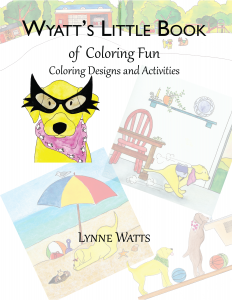Kids and anxiety
Kids and Anxiety
I was recently talking with a teenager that I volunteer with at Mostly Mutts, a local shelter for dogs. In the course of our conversation, she told me that she is home schooled because she “has anxiety.” What does it mean when we think and talk about anxiety this way?
When we talk about anxiety as something that we “have”, much like we might say we have blond hair or blue eyes, we are saying that it is something we have little control over. At best it becomes something that we somehow caught like a cold or the chickenpox. And the trouble with that view of anxiety is that it becomes a condition that we just need to live with or treat until it goes away as mysteriously as it appeared.
In actuality all of our emotions are feelings in our body that we create based on our thoughts. This is true of positive and negative feelings. Sometimes these thoughts are so ingrained that they are practically unconscious. Sometimes they are either so common in society or in our minds that we accept them without question as the truth or the only way to believe or think.
But the good news is that with enough effort and insight we can unearth the message that is creating any feeling. Once we understand the message or thought process we can change that process so that we can change the feeling. I think you would agree that this is not only worth the effort, but also a much better plan than learning to live with fear or anxiety through various coping strategies or medication that numbs our feelings.
Here’s how to teach kids to challenge and change feelings:
- Become an observer— Take the time to evaluate a situation where the response is anxiety or fear. Ask the questions:
- What happened? “The teacher announced a test on Friday.”
- What did you tell yourself about the situation? “I don’t understand the material. I always do badly on tests. I’m not ready. I’ll probably fail…”
- How did you feel? “Worried, nervous, afraid, anxious…”
- Challenge your thoughts– argue with them, make them prove themselves, be the devils’ advocate, don’t accept thoughts as the truth
- “I understand a lot of the material and I can learn the rest by Friday.”
- “I don’t always do badly on tests. I have made some really good grades on tests.”
- “I’m not ready… yet. I know how to study and prepare for a test and I can do it. I have the time and the ability.”
- “I won’t fail if I put forth enough effort.”
- Create a plan— don’t just change your thoughts, change your actions based on your thoughts. Plan to do what is necessary to be your best self and put forth your best effort.
- “I’ll study 30 minutes every night”
- “I’ll finish reading the assignment and doing the extra work.”
- “I’ll ask for help on the things I don’t understand.”
- Be vigilant and stay in control of your thoughts and your actions in order to stay in control of your feelings— It’s hard to stay anxious when we are occupied with other things. Stay on track with the plan. Keep working on it and reminding yourself that you are in charge of your thoughts.
- Be patient and give yourself time–The thoughts that create anxiety have had a lot of practice and repetition. It will take some time to replace them but eventually the new way of thinking will become the new habit.
It’s almost Spring Special!
Get all 9 Wyatt story books:
Wyatt Goes to Kindergarten
Wyatt Learns about Being Organized
Wyatt Learns about Mindset
Wyatt Learns about Cooperation
Wyatt Learns about Friendship
Wyatt Learns about Good Manners
Wyatt Learns about Listening
Wyatt Learns about Teamwork
Wyatt Learns about Giving
And Wyatt’s Little Book of Lesson Plans and Games

Just for you! Here are activities, lesson plans, discussion questions, coloring sheets, word search puzzles and games for each of the nine Wyatt the Wonder Dog Books. Over 75 pages of ideas so that you can create lessons on cooperation, teamwork, listening, mindset, friendship, conflict resolution, organization and generosity to quickly extend and incorporate the Wyatt stories.

